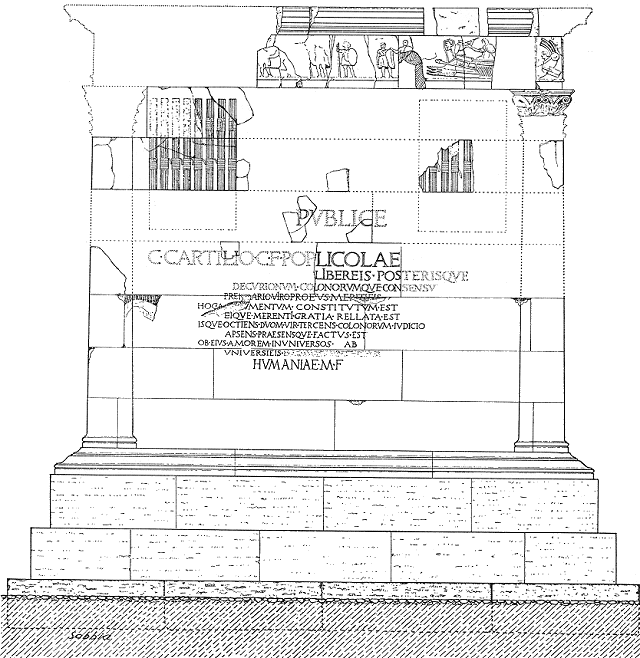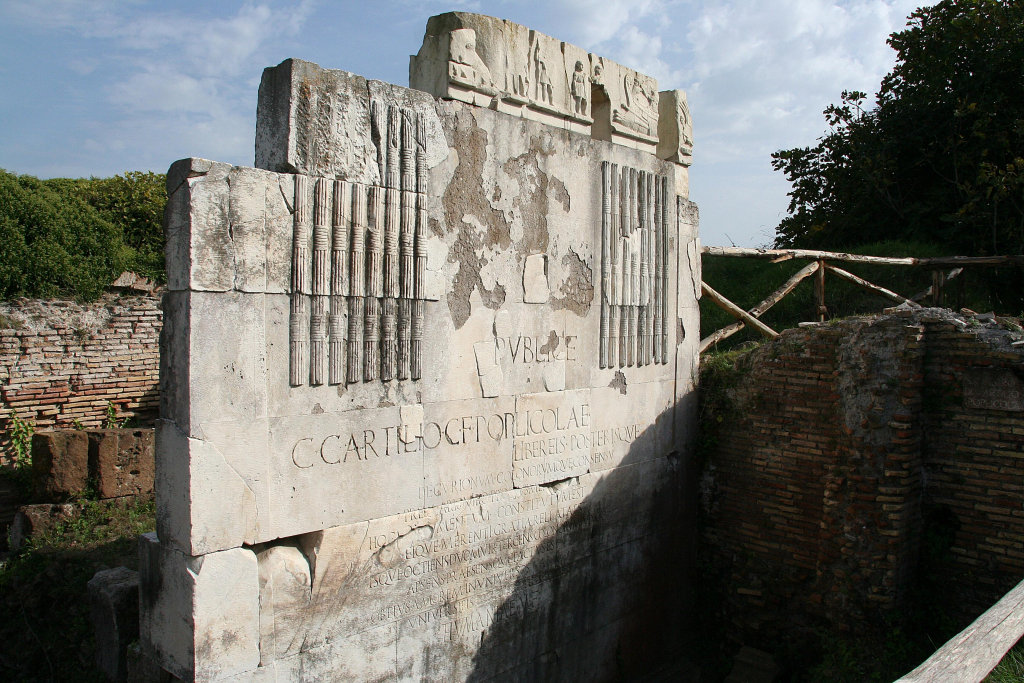|
The Tomb of Caius Cartilius Poplicola, an important citizen of Ostia in the first century BC, was built in the years 25-20 BC. It is situated to the south-east of what has been called the Loggia of Cartilius Poplicola. Poplicola means "friend of the people". This cognomen (third name) was probably conferred by the Ostians, in recognition of his services to the city. The tomb was originally a freestanding structure. The surrounding buildings were erected in the Hadrianic period. Like all tombs it is situated outside the city wall, in this case outside the Porta Marina, near the ancient sea-shore. One other tomb has been found in this area, the large Funerary Monument III,VII,2, the tomb of another leading citizen from the first century BC, perhaps Publius Lucilius Gamala. The front of the monument was the west side, facing a road that has disappeared. There is a square base with travertine revetment (6.20 x 6.20 m.). The front of the upper part (4.70 x 4.70 m.) was decorated with marble, the sides with travertine, while the back had tufa revetment. On the front is the following inscription:
Humania must have been the wife of Poplicola. Sixteen bundles of rods are flanking the inscription, two for each time Poplicola was mayor (duovir). The bundles, by the way, are not fasces, because the axe is missing, which means that the duoviri could not pass sentence of death: in Ostia the lictors carried bacilli. Above the inscription is a frieze, depicting a scene of war. To the left is a row of armed soldiers, guided by a somewhat larger person. To the right is a ship with the head of Minerva on the prow. On board is a soldier about to throw a lance, but another person seems to hold his arm. The soldiers to the left may be Ostians, led by Poplicola, defending themselves against a naval attack, perhaps that of Sextus Pompeius in 39 BC (Florus, Epitome II,18,2). We encounter the same Poplicola in the Temple of Hercules (I,XV,5). |
 Plan of the tomb. After SO I. | ||||




